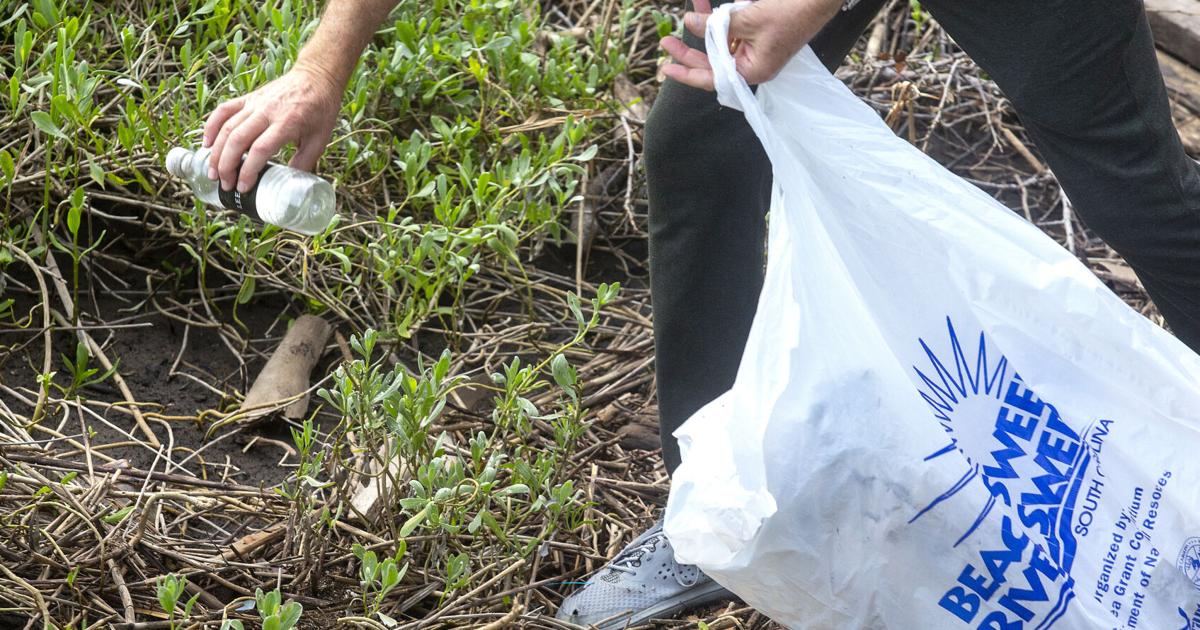
Volunteers across South Carolina on Sept. 20 will come together to pick up trash left on beaches, marshes and other waterways.
The Beach Sweep/River Sweep has been an annual effort to clean up the natural environment since 1988. The S.C. Sea Grant Consortium organizes cleanup events on the coast, while the state Department of Natural Resources is leading the inland sweeps. The event is held in conjunction with the Ocean Conservancy’s International Coastal Cleanup.
Last year, 3,212 volunteers cleared over 27,000 pounds of debris statewide, according to Susan Ferris Hill, coastal coordinator for the cleanup.
While most of the litter consists of cigarette butts, food wrappers and plastic packaging, Hill said volunteers will also find tires and housing appliances like stoves and washing machines.
“Unfortunately, some people actually drop their debris…both on the coast and inland,” she said. “Just getting all of that nasty stuff out of the environment is a good thing.”
But Hill said she’s noticed a sharp decrease in the number of grocery bags and other plastic bags during the cleanup because multiple municipalities in Charleston County have banned them.
Volunteers will work at more than 20 sites in the Charleston area, including the barrier islands.
James Island resident Edward Evans has led the cleanup effort at Waterfront Park for 25 years. He said he started volunteering to help pick up the trash at the park after seeing how much litter was mixed in the marsh every time he would take his dog to the park to play fetch.
Evans, who has seen firsthand how much trash — mostly plastic, foam and nurdles — accumulates at the park, said he enjoys doing his part to clean it up. He’s confident most of the volunteers enjoy it, too, because he usually has the same group of people coming back every year.
Evans added it’s “wet, dirty, nasty work.”
“We get down in the marshes,” Evans said. “I’ve had people sink down to their waist in the mud. No telling how many shoes people have had stuck in the mud.”
Evans, who leads an environmental consulting firm, said he often investigates areas where the environment has been polluted and sees the impact of contamination, like brownfields. This work reinforces his efforts to do his part to help clean up the environment, he said.
Meanwhile, Blake Scott is newer to the volunteer efforts, entering his fifth year helping lead the cleanup in his neighborhood, Wagener Terrace. He lives a block away from Halsey Creek, a prime location for volunteers to pick up trash during the sweep.
Scott said in the past he’s noticed a lot of broken glass in the creek, but since the neighborhood started to participate in the Beach Sweep, the environment is much cleaner.
“It’s great to know that through these efforts over the last five years, my kids are now able to interact with a cleaner, healthier marsh ecosystem to the point where if for some reason, they take their shoes off, I’m not so worried that they’re going to cut their feet on glass because we’ve made it that much cleaner,” he said.
Because of the cleanup efforts, there are now access points at the creek where families can catch crabs, collect snails or just sit down and watch birds, he said.
Hill said it’s a rewarding feeling for both her and volunteers to see the impact of their work.
“It’s a real feel-good activity for folks, just for a few hours, to help out their natural environment,” Hill said.
Times for the cleanups vary by site. For more information about the Beach Sweep/River Sweep litter cleanup, visit https://www.scseagrant.org/bsrs-sites/.



